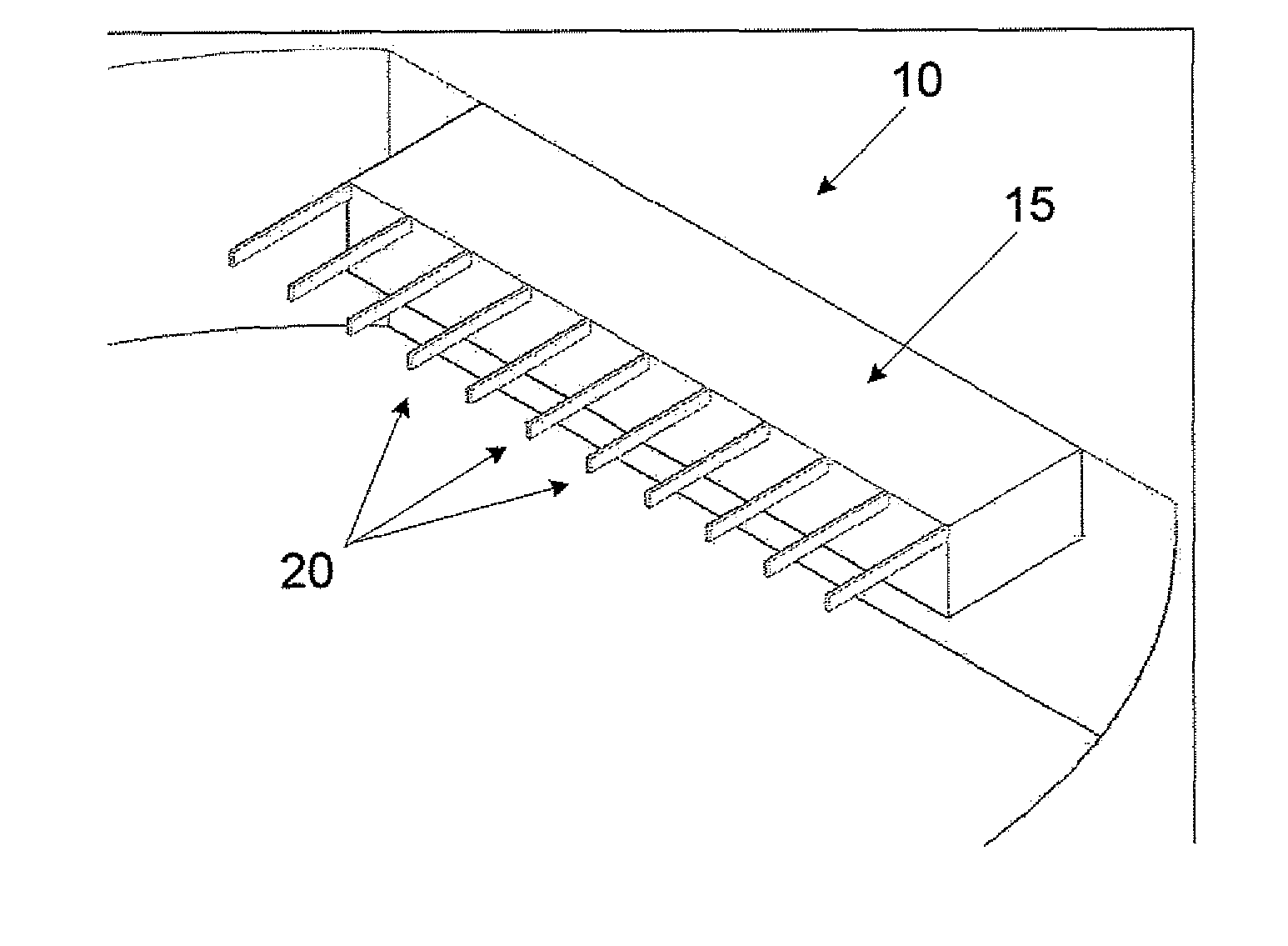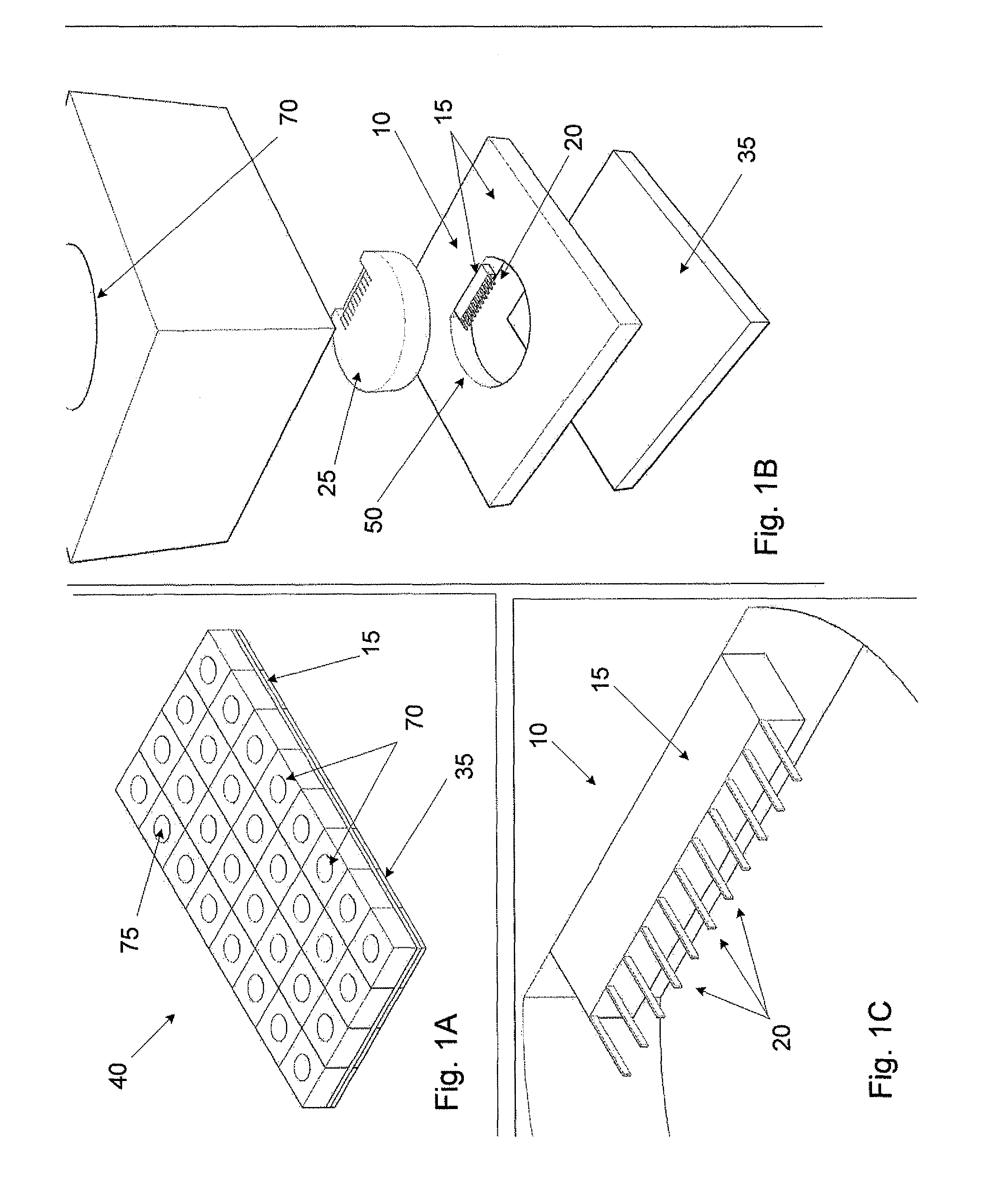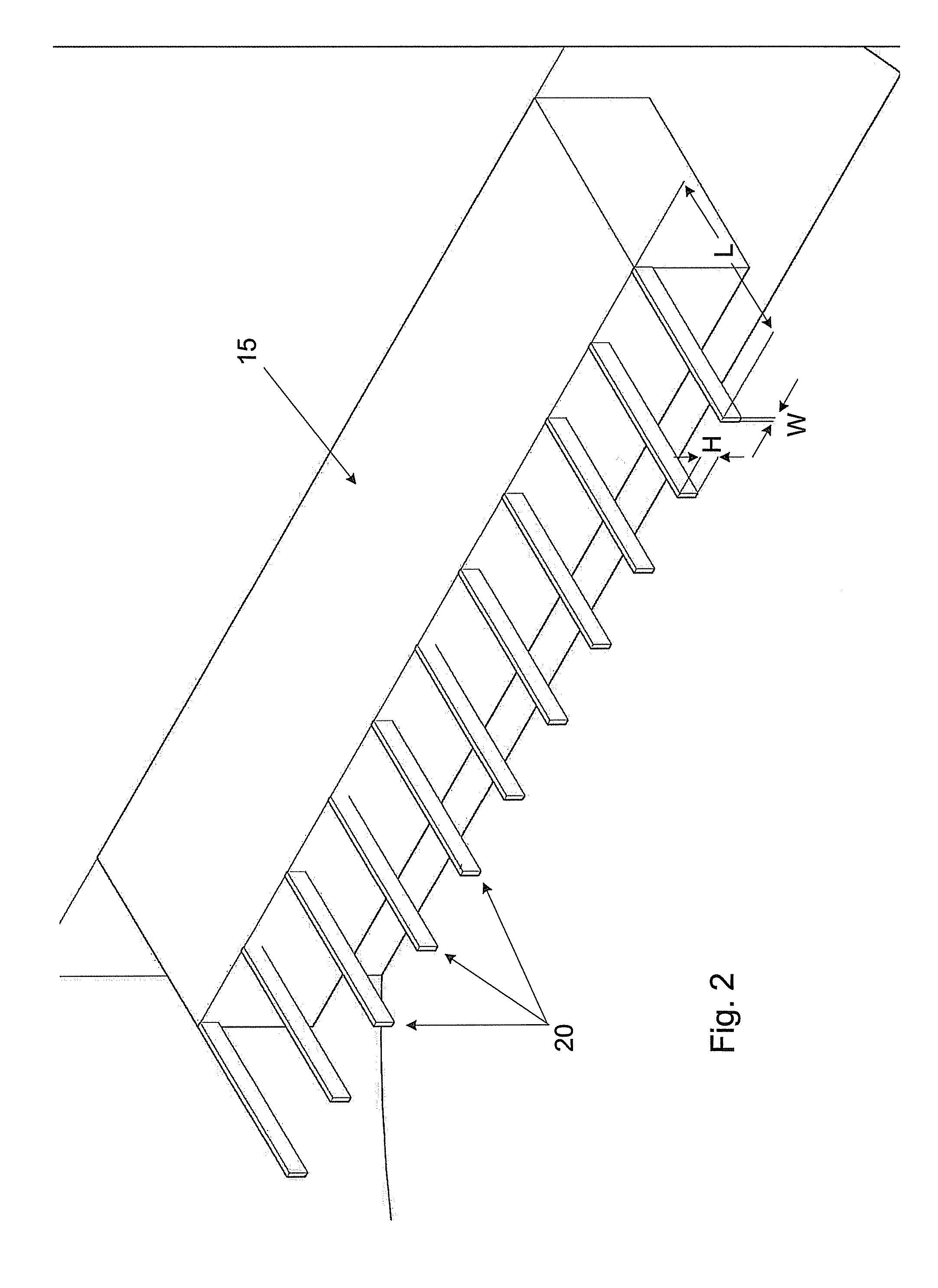Devices, apparatus, and methods employing biomimetic cilia for microfluidic manipulation
a technology of microfluidic manipulation and cilia, which is applied in the direction of positive displacement liquid engines, machines/engines, laboratory glassware, etc., can solve the problems of inability to achieve micro/nanoscale fluid manipulation using cilia actuation, and achieve the effect of reducing errors, minimizing non-specific binding of dna probes/targets, and evaluating the biomixing performance of cilia devices
- Summary
- Abstract
- Description
- Claims
- Application Information
AI Technical Summary
Benefits of technology
Problems solved by technology
Method used
Image
Examples
example one
Biomimetic Silicone Cilia for Microfluid Manipulation
I. Experimental Configuration
[0108]To demonstrate the underwater fabrication process, a device was fabricated as shown in FIGS. 10A-C. The device was composed of a 1 mm-thick glass slide, a chamber, a supporting block, a cilia structure, and a cover plate as shown in FIGS. 10A-C. The fluidic chamber was made of a cured 2 mm-thick PDMS plate. The PDMS plate had a 27 mm×7 mm (W×D) rectangular window in the center. A 25 mm×5 mm×0.7 mm (W×D×H) PDMS block was prepared to support a cilia structure. The device was covered with a 0.4 mm PDMS plate. A cilia array was assembled in a fluidic device with the underwater fabrication process, described below.
[0109]FIG. 11 shows the schematics of the experimental set-up to excite the cilia, measure the cilia response, and also trace the microfluid motion. For the excitation of the cilia device, a leadzirconate-titanate (PZT) microstage (PZS-200, Burleigh Instruments, Inc.) was controlled by a sig...
example two
Fluid Manipulation by Biomimetic Cilia
I. Fabrication
[0130]1. Fabrication of the PDMS Cilia Structure
[0131]Two kinds of cilia array were fabricated for fluid actuation; both vertical and horizontal cilia array were fabricated according to the methods used in “Example One” above. Deep reactive ion etching (DRIE) with the standard Bosch process (ICP 380, Oxford Instruments) was used to fabricate a high aspect ratio the structure. To remove the Bosch polymers generated in DRIE, the wafer was etched by O2 plasma at 300 W power for 10 minutes (Model 2000, Branson), followed by removing the photoresist in H2O2+H2SO4 mixture (1:3) for 10 minutes. The processed wafer was rinsed in flowing de-ionized (DI) water for 15 minutes. After drying the Si mold by nitrogen gas flow, it was silanized with tridecafluoro-1,1,2,2-tetrahydroctyl-1-trichlorosilane (United Chemical Technolgies, Inc.) for 2 hours in a desiccator in order to grow the monolayer. It helped release a cured PDMS structure from the ...
example three
Cilia Device for Microfluid Manipulation
[0145]A cilia device for resonating the cilia in water was fabricated in accordance with the manufacturing methods discussed above to achieve cilia with a 10 μm width, 75 μm height, and 420 μm length with the cilia spaced apart by 200 μm. A fluoreporter biotin quantitation assay kit (Invitrogen, Carlsbad, Calif.) was used to determine the reaction performance. The mixing performance of the cilia device was evaluated by three kinds of experiments; (1) diffusion, (2) vibration without cilia and (3) cilia actuation.
[0146]The zig-zag and rotational motion of the microspheres was observed in the cilia device. This complex flow could enhance bioreaction by increasing a molecular collision rate. According to the avidin-biotin experiments, the detection sensitivity due to the cilia-actuation was enhanced by 1000 times those of the other cases, as shown in FIG. 19. Considering the versatile fabrication and actuation protocols, the proposed cilia can be...
PUM
 Login to View More
Login to View More Abstract
Description
Claims
Application Information
 Login to View More
Login to View More - R&D
- Intellectual Property
- Life Sciences
- Materials
- Tech Scout
- Unparalleled Data Quality
- Higher Quality Content
- 60% Fewer Hallucinations
Browse by: Latest US Patents, China's latest patents, Technical Efficacy Thesaurus, Application Domain, Technology Topic, Popular Technical Reports.
© 2025 PatSnap. All rights reserved.Legal|Privacy policy|Modern Slavery Act Transparency Statement|Sitemap|About US| Contact US: help@patsnap.com



